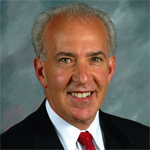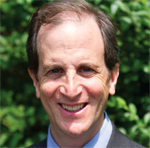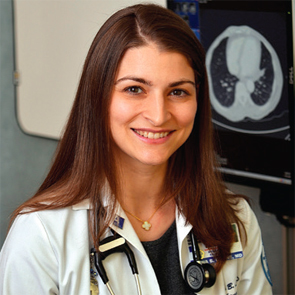
Image Credit: iQoncept/shutterstock.com
When deciding where to locate a rheumatology practice, you need to do your homework. There are many factors to ponder, including accessibility, population demographics, competition, need, costs and whether a building meets your needs.
First and foremost, it’s important that patients can easily get to and find your practice. Randy Eigen, first vice president, CBRE New Jersey, Saddle Brook, N.J., says it’s key to have public transportation stops near a practice in urban areas. In suburban areas, however, vehicular access is most important, and highway access allows for a greater geographic radius of patients. Typically, a 25-minute ride is the maximum distance patients will travel.
But traffic is a double-edged sword, Mr. Eigen points out. The greater the traffic in an area, the more prospective patients are located in that area. At the same time, however, sitting idle in a car is frustrating and can deter patients from returning.
Stephen Kaufman, a licensed real estate salesperson specializing in commercial real estate for Friedland Realty Advisors, in Harrison, N.Y., says a physician must also consider whether they want a retail presence or want to be located in an office building. “If the rheumatologist is looking for a retail presence, visibility is very important,” he says. “If the doctor would like to be in a professional office building, it is most important that patients can easily find the building.”
In addition, parking must be available and convenient to the building, because walking any distance can be difficult for some patients. In urban settings, parking may be less important if there is adequate public transportation.
Aesthetics go a long way to convey the practice’s attitude & help to attract desirable employees.
Further, a practice’s physical building should be easily accessible. Is there a ramp? Are there enough elevators in the building so patients aren’t waiting long? These factors all play into a location’s desirability, Mr. Kaufman says.
Alana B. Levine, MD, rheumatologist, Hospital for Special Surgery (HSS), New York, says patients with disabilities can be transported from their homes to HSS via ambulatory service, car service or public transportation.
Population Demographics

Mr. Eigen
Of course, it’s essential to make sure there are enough patients in an area who need your services. Mr. Eigen points out that the U.S. Bureau of Labor Statistics can provide demographics, including the breakdown of a population by age bracket and income—two valuable considerations.
Mr. Kaufman notes that a rheumatologist should determine how far patients are willing to travel. “If a doctor is setting up a practice in an office building, he will likely need a broader reach to get patients,” he says. “A retail practice would rely on the more immediate population.”
Because she trained at HSS, Dr. Levine was familiar with the population served by the hospital. “As I specialize in caring for patients with lupus, rheumatoid arthritis and other complex autoimmune rheumatic diseases, it was important for me to remain at a center that specializes in these conditions and is accessible for patients with these diagnoses,” she says.
Area Competition
Taking population demographics a step further, you will also need to look at how many other rheumatologists practice in your targeted area and if there are enough patients who need all of them. “If you can determine what percentage of a population [comprises] potential patients and you create a 25-minute drive time radius around your prospective location, you can estimate the number of prospective patients who are accessible to your location,” Mr. Eigen surmises. Using a radius of twice that distance and finding the rheumatologists within that radius will give you a clear picture of your competition. “Once you assess the competition, understand the prospective patient population and determine the target number of patients you would require to have a successful practice, then you can make some intelligent inferences as to where your practice should be located,” he says.

Mr. Kaufman
Mr. Kaufman says a rheumatologist should contemplate the stage at which your practice is developed and your patients’ level of loyalty. “If a rheumatologist is starting a practice and does not have a loyal following, it is particularly important to find an underserved area,” he says. “But if a doctor has a large and loyal patient base, this concern may be mitigated by the trust built with his patients, and the doctor may be able to locate the practice in a site that better meets some of their other needs.”
Having trained at Weill Cornell Medical College in New York City for her residency and HSS for her fellowship, Dr. Levine says she’s been fortunate to maintain relationships with colleagues she trained with and many of her teachers in primary care and other subspecialties, which has helped in building her practice.
Cost Considerations
Cost is always a factor to weigh; however, don’t do it in a vacuum. “One location can be much more valuable than another for numerous reasons, including accessibility and competition, as well as the quality, appearance and the management acumen of its ownership,” Mr. Eigen says. “Another consideration is an area’s trends. Is it growing and attracting new families? Are new residential buildings being constructed? If so, these are opportunities for new patients.”
Along those same lines, Mr. Kaufman says a higher rent might make sense if it comes with certain benefits. Ask yourself such questions as: Is the value of having a visible presence worth the cost? Will locating a practice in a more attractive and more expensive building help maintain and grow the patient population? Do I want to be near a hospital? How close to public transportation and highway exits is preferable?
“As much as cost is critical to locating a practice, location drives cost,” Mr. Kaufman points out. “These are questions you need to answer in order to make good business decisions.”
Another important question to ponder is whether to lease or purchase. Of course, there are benefits to both, but if the rheumatologist is contemplating a long-term lease and making significant improvements to the space, they should speak with an accountant to best understand the benefits of each alternative, Mr. Kaufman adds.
Medical Complex vs. Standalone Facility
The trend today is to locate a medical practice in a building that houses other medical practices. However, not all buildings are created equally, and the tenant mix can significantly influence your practice’s success or failure. “Some practices overburden parking and some may have patients that may be too distressing for your patients to encounter,” Mr. Eigen says. “But if you select a building that has complementary practices where you can get and give referrals, you can build your practice more quickly and most likely larger than if you were in a standalone building.”

Dr. Levine
Looking at other related pros and cons for rental properties, Mr. Kaufman points out that in a medical building the landlord typically takes care of most (if not all) maintenance issues. Alternatively, in a stand-alone building, the physician may be able to brand the building with the practice’s name, yet may have to maintain the parking, sidewalks and so forth that go with the property.
Dr. Levine says it’s ideal to have her practice located in a building that offers other medical services patients may need, such as orthopedics, radiology and physical therapy, among other specialties. “This offers efficiency for my patients and easy coordination between me and other providers,” she says. “I recommend considering such a model to optimize the patient experience.”
A Good Fit
Another factor to think about is how much work needs to be done to the space. For example, do you require sinks in most exam rooms, and if so, are they already there? “Renovating a medical space can be expensive, so a doctor should explore whether the conditions of the spaces they are looking at meet their needs,” Mr. Kaufman says.
Along those same lines, Mr. Eigen advises getting an initial cost to plan and renovate a space, if necessary. Assemble a team of advisors who can help guide you through the process. “A commercial real estate broker with experience in medical practices can be a valuable asset and one that you traditionally do not have to pay, since the broker’s fee is customarily paid by the landlord [although there are some exceptions],” he says. “A knowledgeable architect, an experienced contractor and a good real estate attorney with commercial leasing experience round out the team.”
The best scenario is when the landlord will construct the space in what is known as a build-to-suit, turnkey transaction. “The landlord custom builds the space at his expense in exchange for a long-term lease at a rental rate that enables the landlord to amortize a large percentage of the improvements,” Mr. Eigen explains. “This is not always available, and most of the time the landlord will provide a ‘tenant improvement allowance,’ usually expressed in dollars per square foot of rentable space.” Rentable space is the space within the four walls you will occupy, in addition to your proportionate share of the common areas of the building.
Other Factors to Consider
Other factors you will want to weigh when choosing a location include which hospitals serve the area and what departments in those hospitals are best known for excellence, Mr. Eigen says.
You’ll also want to evaluate a population’s workforce skills and what resources are available to find potential employees, such as trade schools, employment agencies and local economic development agencies.
A practice’s building should look appealing, too. “A practice’s aesthetics are becoming more meaningful,” Mr. Eigen says. Aesthetics go a long way to convey the practice’s attitude and help to attract desirable employees.
Ultimately, “an attractive, well-managed building in an accessible location with minimal competition is your recipe for success,” Mr. Eigen concludes.
Karen Appold is a medical writer in Pennsylvania.

